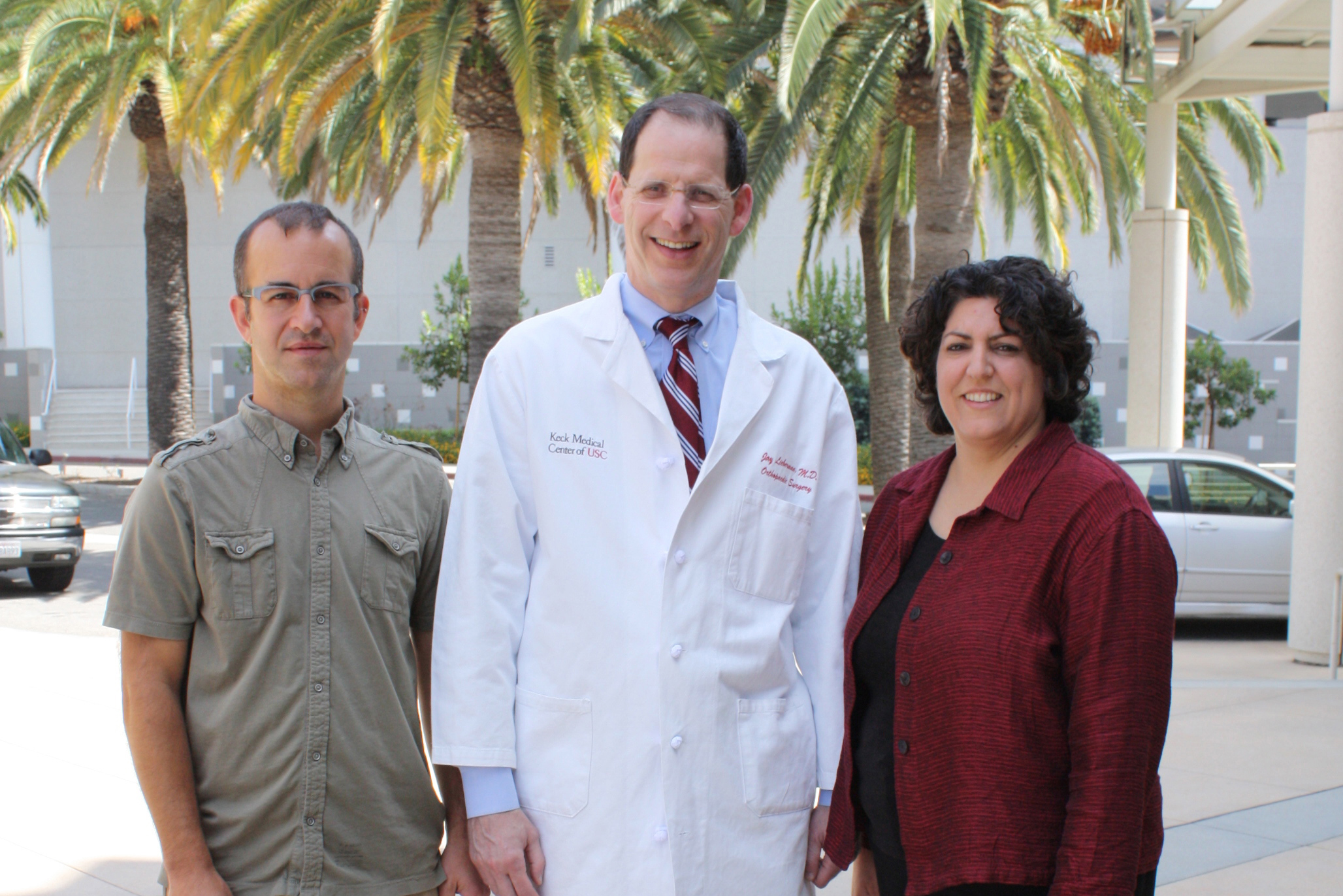As chair of the Department of Orthopaedic Surgery at the Keck School of Medicine of USC, Jay R. Lieberman, MD, regularly sees patients with bone defects too severe to heal. This unmet clinical need inspired him to team up with two stem cell biologists, Gage Crump, PhD, and Francesca Mariani, PhD, to find new solutions.
“I was treating patients with large bone defects associated with revision total hip and knee replacement,” Lieberman said. “Another group that we have seen more recently are soldiers, who unfortunately sustained high-energy injuries from explosive devices or gunshot wounds. And our hope with our research is to develop solutions for these problems.”
Lieberman, Crump and Mariani kicked off their collaboration in 2013, when they received a $400,000 grant from the Regenerative Medicine Initiative, funded by the Keck School’s dean. This enabled the team to explore potential ways to repair human bones through lessons learned from two not-so-distant relatives: zebrafish and mice.
“A great benefit of the Regenerative Medicine Initiative is that basic biologists are encouraged to work with clinicians to understand pressing challenges,” said Crump, associate professor of stem cell and regenerative medicine.
The project also attracted support from the National Institutes of Health (NIH). In 2013, Mariani, assistant professor of cell and neurobiology, received an NIH grant to develop a new bone regeneration model in mice. In 2014, Crump secured an additional NIH grant, advancing these investigations in zebrafish.
By studying zebrafish jaw repair, the team discovered that a special type of repair cell, called an “ossifying chondrocyte,” is necessary for effectively healing bone. The Crump and Mariani labs published these findings in the journal Development.
The team found that similar repair cells also enable mice to heal large-scale rib injuries. To study these injuries further, Mariani recently secured a new $2.4 million NIH grant.
“By using our new bone regeneration model, we can identify the stem cells needed for successful bone healing,” Mariani said. “We are investigating a promising biological factor that stimulates these cells to mediate repair.”
Lieberman and Crump will remain key collaborators as they advance their findings.
“Collaborative clinician-scientists such as Dr. Lieberman contribute exponentially to the success of any basic research effort,” said Andy McMahon, PhD, director of the Eli and Edythe Broad Center for Regenerative Medicine and Stem Cell Research at USC. “They bring a deep understanding of both the patient need and the clinical requirements — which are vital to translating stem cell research into the future of patient care.”
— Cristy Lytal


